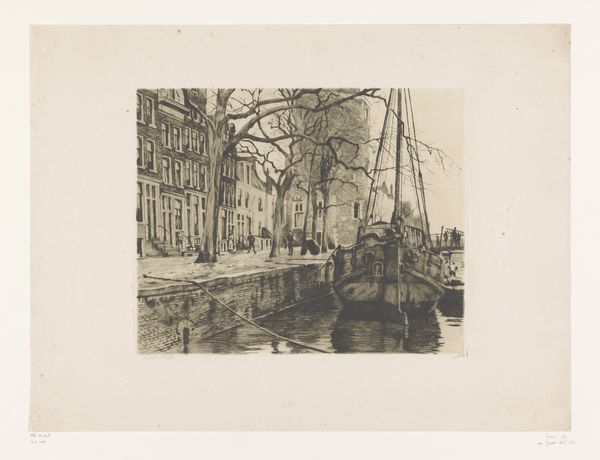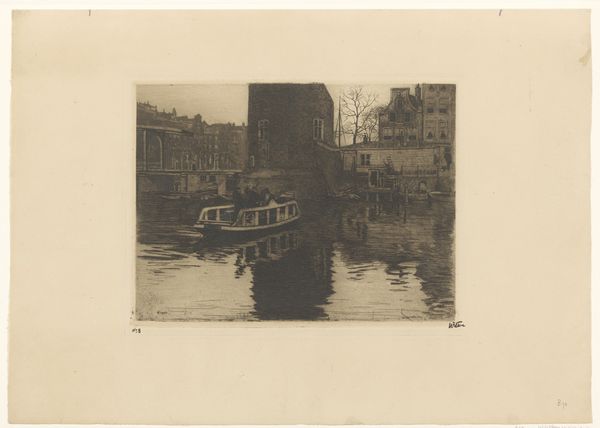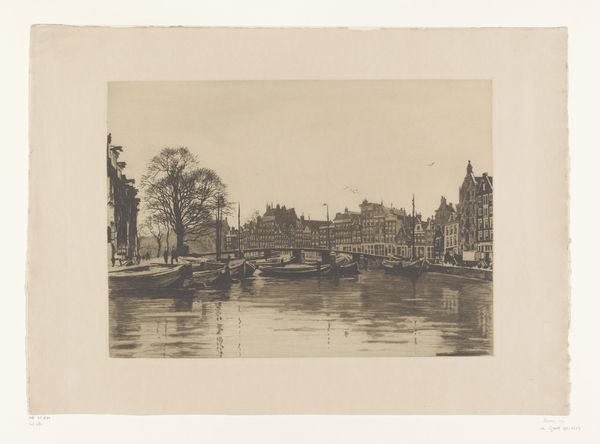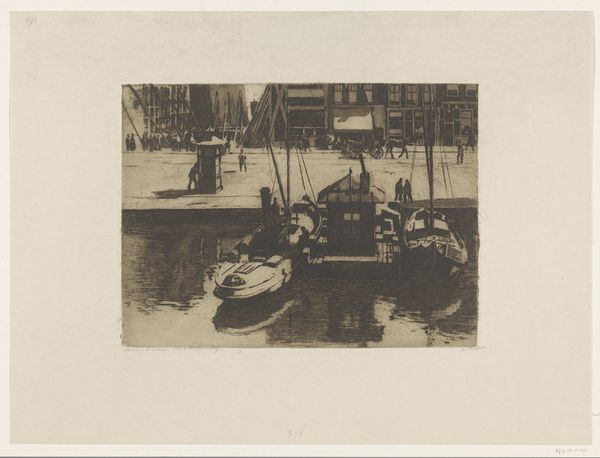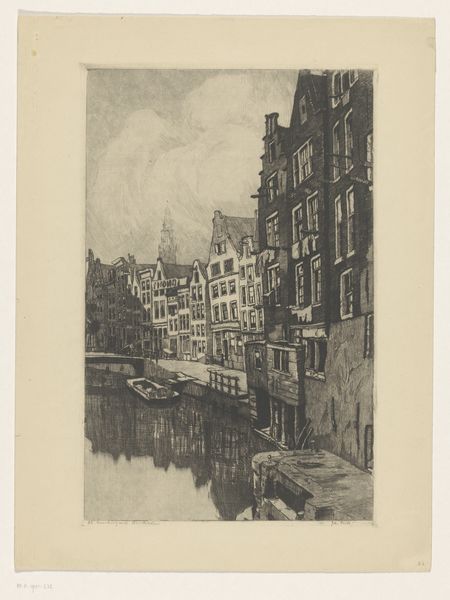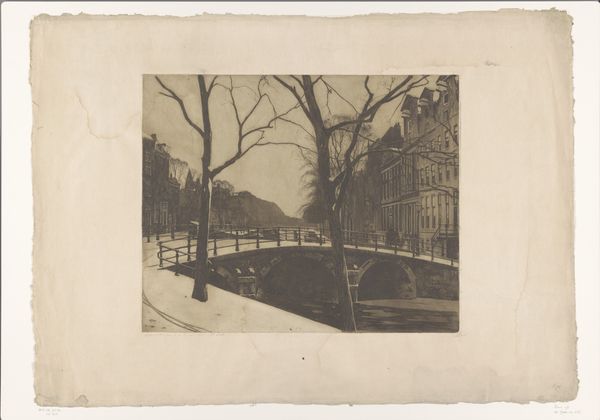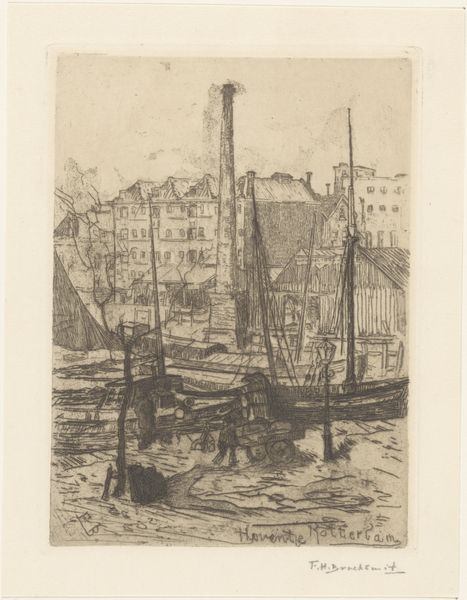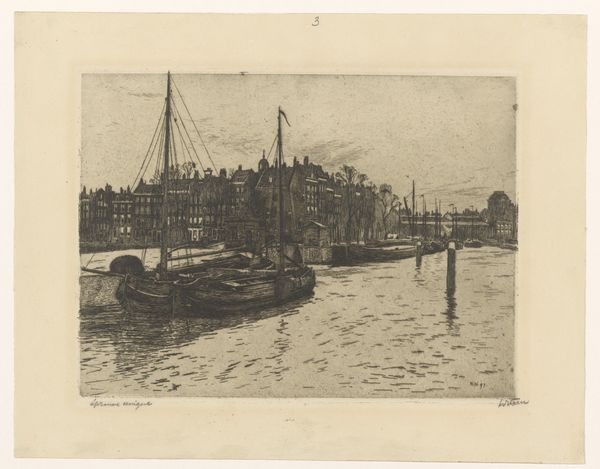
Aangemeerd zeilschip bij een toren aan de Oude Waal in Amsterdam c. 1912
0:00
0:00
willemwitsen
Rijksmuseum
Dimensions: height 329 mm, width 402 mm
Copyright: Rijks Museum: Open Domain
Editor: So, this etching, "Aangemeerd zeilschip bij een toren aan de Oude Waal in Amsterdam" by Willem Witsen, around 1912, gives me a somewhat melancholic feeling. The textures seem rough and worn, making me think about the city's history. What do you see in this piece? Curator: I see an interplay between industrial development and artistic interpretation of it, right down to the etching process itself. Notice how Witsen utilizes the materiality of the etching to reproduce the textures of the urban landscape. Consider the etcher's needle, a tool of the craftsman, being used to depict a working canal. It’s a re-evaluation of traditional printmaking; Witsen is depicting Amsterdam’s industrious reality. How does the paper support this? Editor: That's interesting! I hadn't thought about the conscious choice of materials in relation to the subject. Well, the choice of paper lends itself to that… It looks like a laid paper, almost handmade and highly textured, a material decision perhaps grounding this mechanical rendering in craft. Curator: Exactly! This choice pulls the artwork out of purely representational territory and forces us to confront how artistic means shape our perceptions of labor, manufacturing and industry at this time. What do you think he’s suggesting about labor and its place in Amsterdam? Editor: The almost gritty, less refined marks create this urban and lived-in sensation that contrasts to polished painting... perhaps a turn away from academic tradition of how art is made? Curator: Precisely. This approach elevates what might be considered 'low' subject matter – everyday life and industry – into the realm of high art by demonstrating skill, intentionality and new approaches to materials. It certainly presents the shifting status of both subject and media, no? Editor: Yes, absolutely. It really brings forward the layers of meaning woven into a seemingly simple cityscape. Thanks for making me look beyond the initial image! Curator: My pleasure! Analyzing the artwork in terms of its production expands its scope, and demonstrates new ways we might connect it to ourselves.
Comments
No comments
Be the first to comment and join the conversation on the ultimate creative platform.
